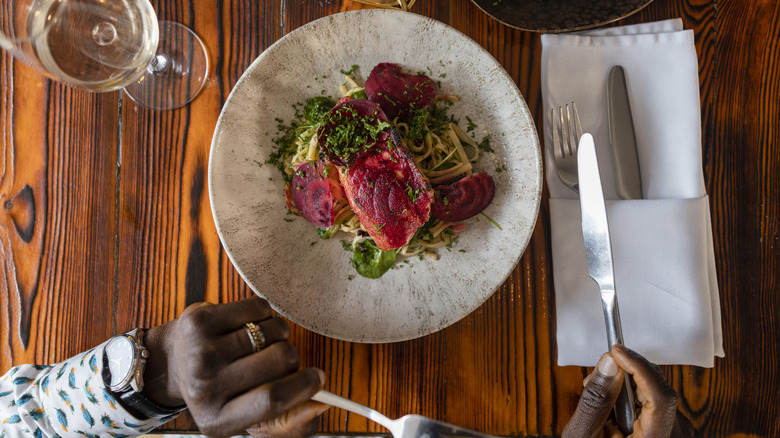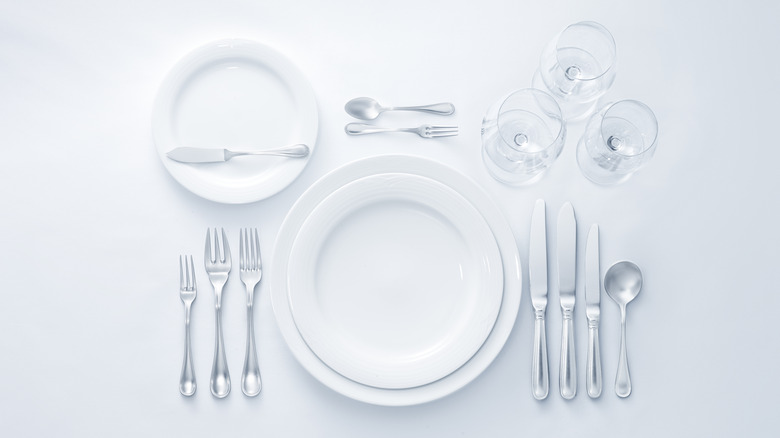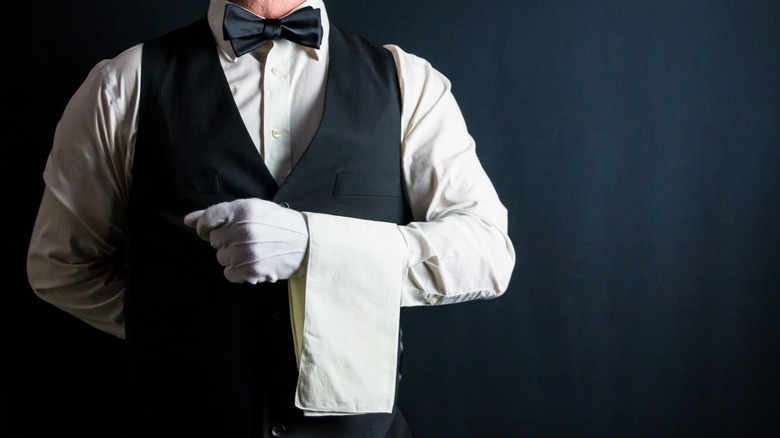Where To Put Your Silverware Between Bites, According To British Etiquette
For most of us commoners, employing painstaking royal etiquette while dining with the British elite is an unlikely scenario. Regardless, a fascination with their rules of etiquette persists. And with the strong divergence from how most of us eat on the daily, who could blame us? Whether you're indulging curiosity, planning an immersive watch party for "The Crown," or just wondering how to most gracefully navigate your next formal dining experience, you're in the right place. Because, yes — British etiquette not only dictates the right way to use your silverware during a meal but the right way to rest your cutlery between bites, too.
@williamhansonetiquette It’s a sign of the tines! #dining #etiquette #williamhanson
Next time you need to pause mid-meal to chew or chat with a dining companion, simply make a triangle with your fork and knife on your plate, fork tines down and knife blade facing you. While remembering rules like this may initially sound stressful, it also has the potential to alleviate unnecessary stress during your meal, giving you a clear directive to follow and avoiding accidental blunders.
Unpacking the reasons behind this practice
If you've never thought much about where you set your silverware between bites, you probably wouldn't think twice about leaning them against the side of your plate, handles resting on the table, or even cutting out the middleman and setting them on the table directly. But in British etiquette, intentionality and politeness are essential. Not only is it considered rude to allow used silverware to touch the table — even just the handles — but it's also considered unsanitary.
The general rule is that, once you've begun using a particular piece of silverware, it shouldn't touch the table again. Perhaps confusing at first, but if you consider the number of forks and knives included on a formal dining table, this makes perfect sense. Each utensil is meant to be picked up and used for a given course, then placed on the plate and taken away by the waiter without leaving a mess behind or awkwardly negotiating which pieces you'll need to keep for the next course. So next time you need a break, keep the tines-down, blade-in fork and knife triangle in mind. For a visual representation of how to accomplish this maneuver, British etiquette coach William Hanson shared a quick and informative tutorial on TikTok
Your silverware sends a message
Another thing to keep in mind is that — manners aside — during a formal meal, your silverware is used to communicate to waitstaff where you are in a given course. The particular position and placement of your silverware on your plate allow them to know when they should take it away from the table, without inquiring directly and interrupting table conversation. So what's the difference between a pause and a full stop in this subtle language?
The fork and knife triangle can vary in location on your plate, depending on the arrangement of food you're working around, but the important elements are that fork tines are down and the knife blade is facing in. Most trained waiters will know this means your meal is still in progress. Where do you put your fork and knife when you're done eating? No matter how much food remains on your plate, place your fork, knife, and spoon together in the lower-left quadrant of your plate with fork tines facing up. If you imagine the plate as the face of a clock, you're aiming for 6:30.



